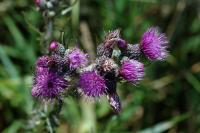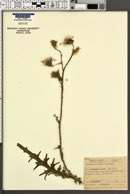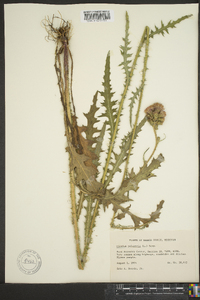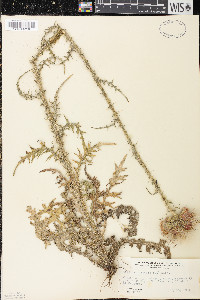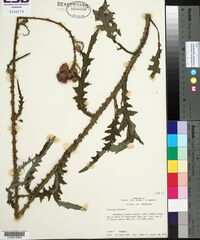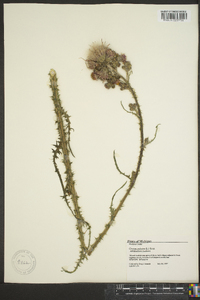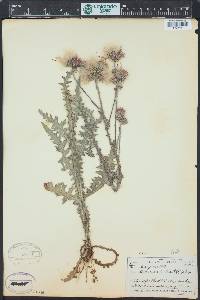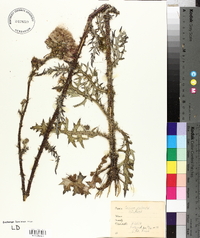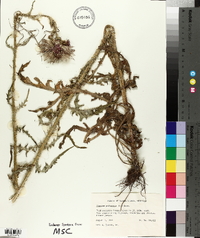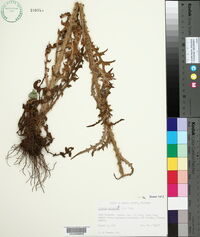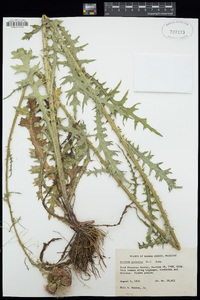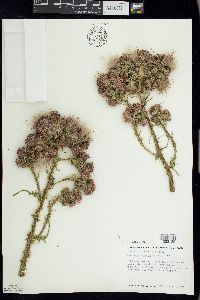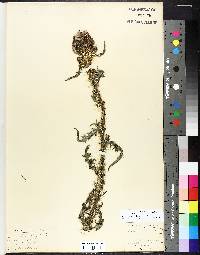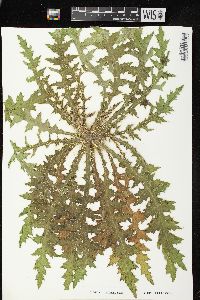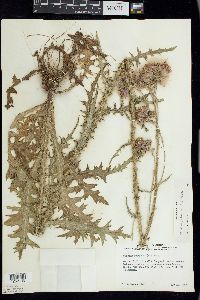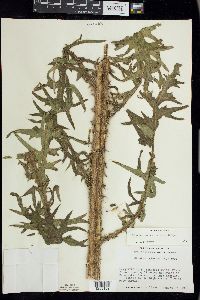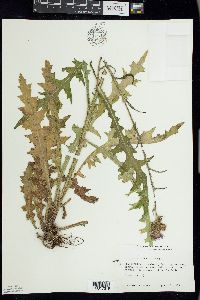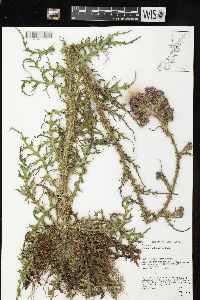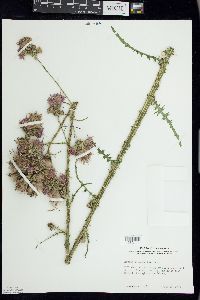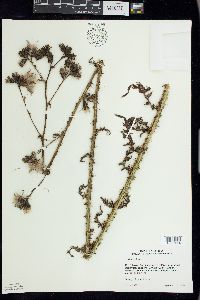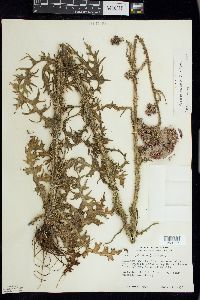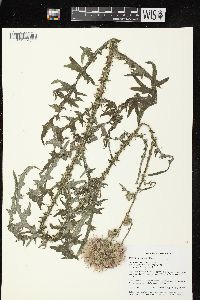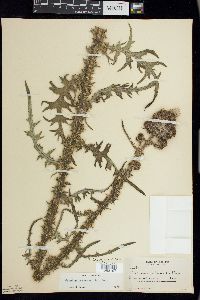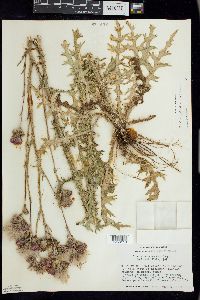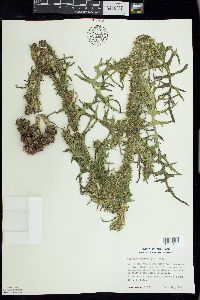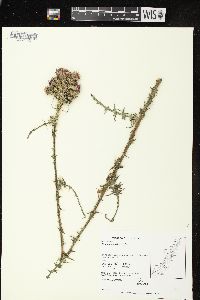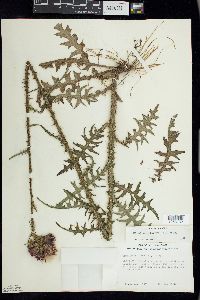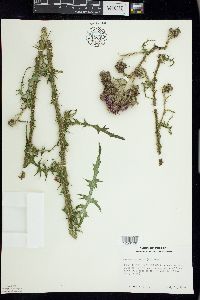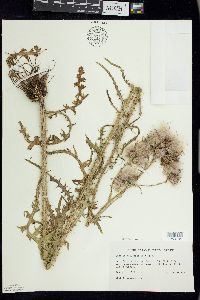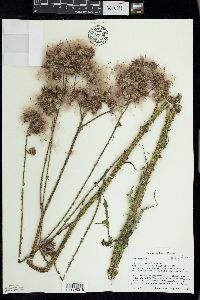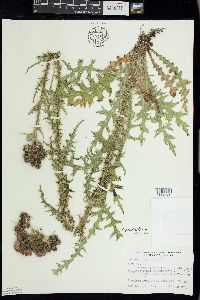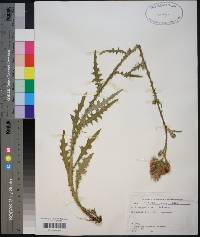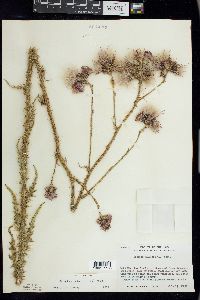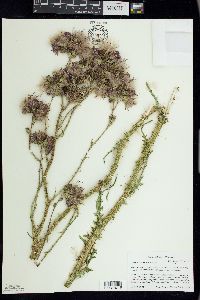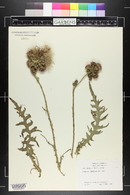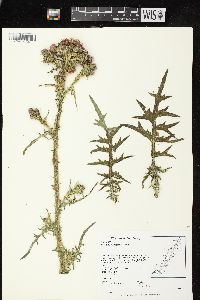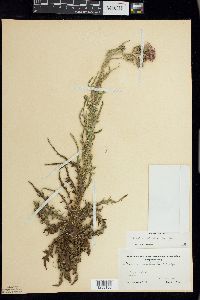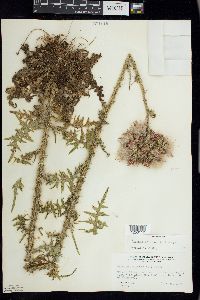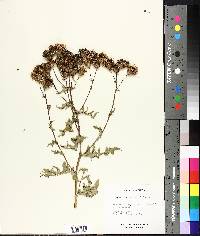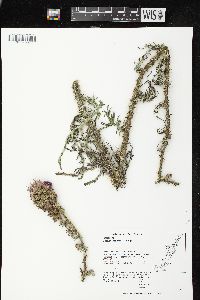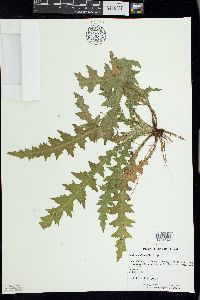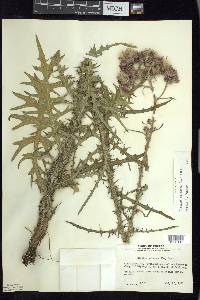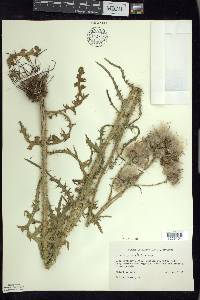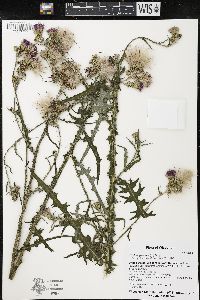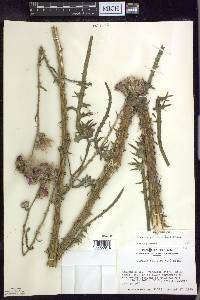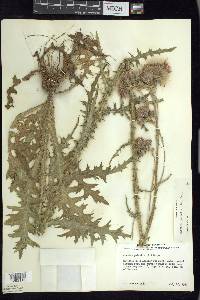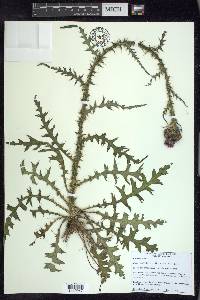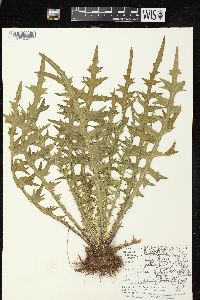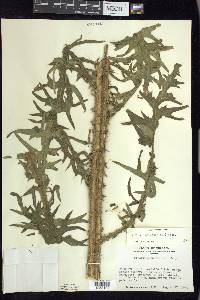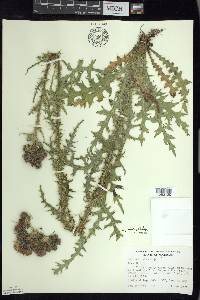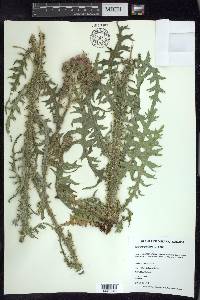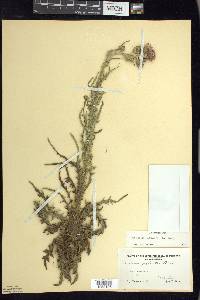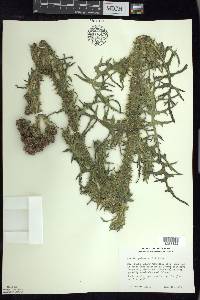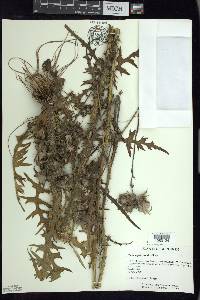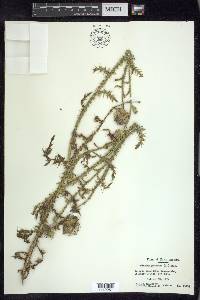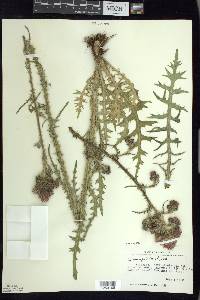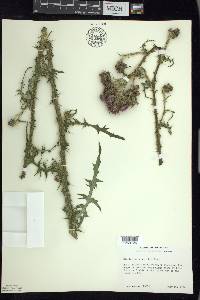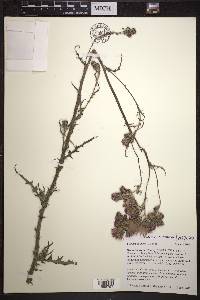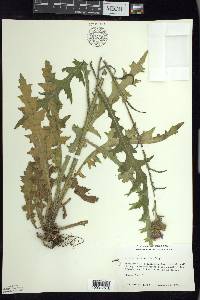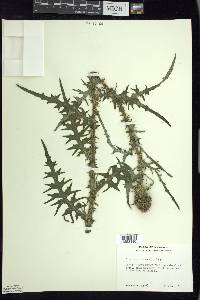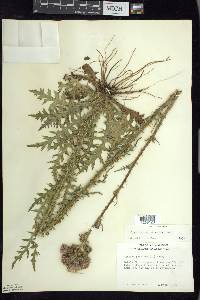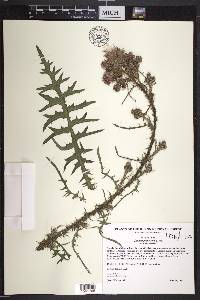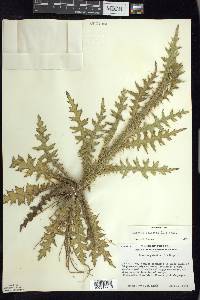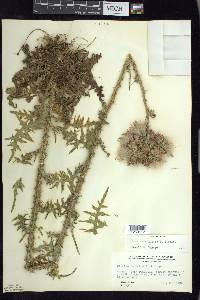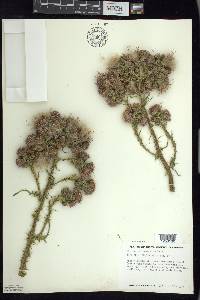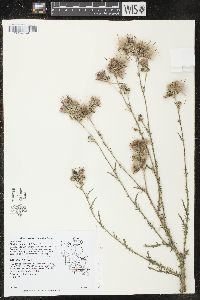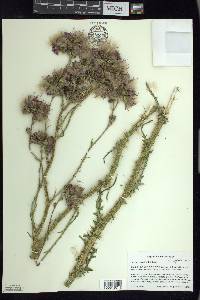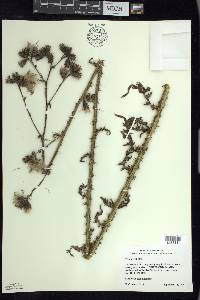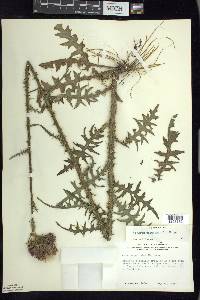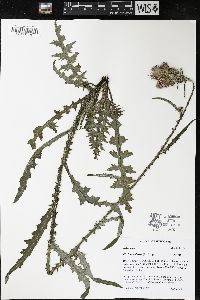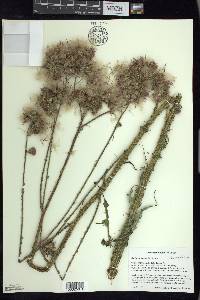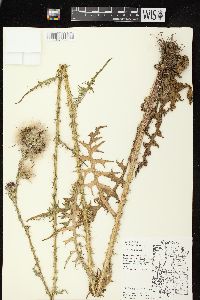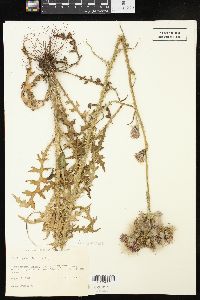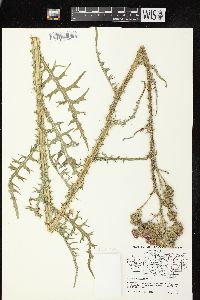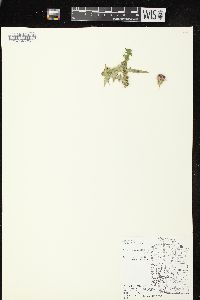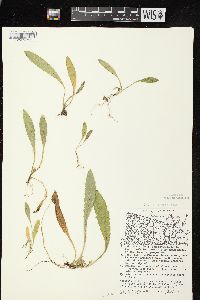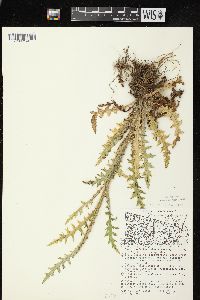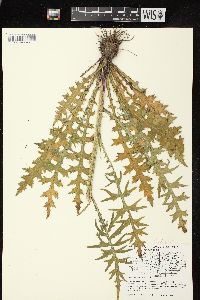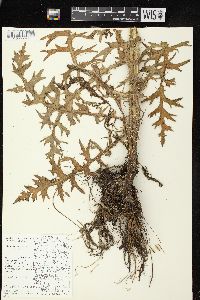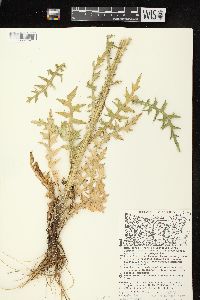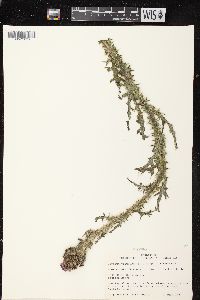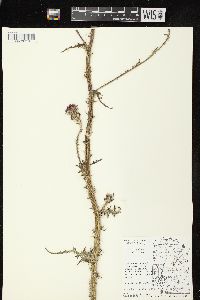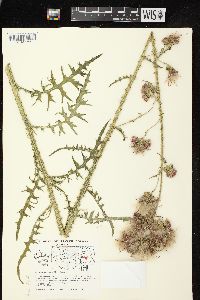Cirsium palustre
|
|
|
|
Family: Asteraceae
Marsh Thistle
[Carduus palustris] |
Biennials or monocarpic perennials, 30-200(-300) cm; clusters of fibrous roots. Stems single, erect, villous to tomentose with jointed trichomes, distally tomentose with fine, unbranched trichomes; branches 0-few, ascending, (short). Leaves: blades narrowly elliptic to oblanceolate, 15-30+ × 3-10 cm, margins shallowly to very deeply pinnatifid, narrow lobes separated by broad sinuses, spiny-dentate to lobed, main spines 2-6 mm, abaxial villous to tomentose with jointed trichomes, sometimes also thinly tomentose with fine unbranched trichomes, adaxial faces villous with septate trichomes or glabrate; basal often present at flowering, petioles spiny-winged, bases tapered; cauline many, sessile, gradually reduced and becoming widely spaced above, bases long-decurrent with prominently spiny wings; distal cauline deeply pinnatifid with few-toothed spine-tipped lobes. Heads few-many in dense clusters at branch tips. Peduncles 0-1 cm. Involucres ovoid to campanulate, 1-1.5 × 0.8-1.3 cm, thinly cobwebby tomentose with fine unbranched trichomes. Phyllaries in 5-7 series, strongly imbricate. greenish, or with purplish tinge, lanceolate to ovate (outer) or linear-lanceolate (inner), margins thinly arachnoid-ciliate, abaxial faces with narrow glutinous ridge, outer and middle appressed, entire, apices acute, mucronate or spines erect or spreading, weak, 0.3-1 mm; apices of inner phyllaries purplish, linear-attenuate, scarious, flat. Corollas lavender to purple (white), 11-13 mm, tubes 5-7 mm, throats 2-3 mm, lobes 3-4.5 mm; style tips 1.5-2 mm. Cypselae tan to stramineous, 2.5-3.5 mm, apical collars 0.1-0.2 mm, shiny; pappi 9-11 mm. 2n = 34. Flowering summer (Jul-Aug). Marshes, wet forests; 10-800 m; introduced; St. Pierre and Miquelon; B.C., Nfld. and Labr. (Nfld.), N.S., Ont., Que.; Mass., Mich., N.H., N.Y., Wis.; Europe. Cirsium palustre is a noxious weed, native to Europe, that invasively spreads through wetland communities, forming impenetrable spiny stands as it displaces native species. The range of this pernicious weed in North America is rapidly expanding. It has the potential to spread into boreal forest areas across the continent; in Europe it grows nearly to the Arctic Circle. The rapid spread of C. palustre in Michigan (E. G. Voss 1972-1996, vol. 3) is indicative of its invasiveness. Spontaneous hybrids between C. palustre and C. arvense have been reported from England and other European countries (W. A. Sledge 1975) and can be expected wherever these species grow together in North America.
Biennial 3-20 dm, the stem spiny-winged by the decurrent lf-bases; herbage ±arachnoid; heads purple, several or many, clustered, seldom any of the peduncles over 1 cm; invol 1-2 cm, its bracts not at all spine-tipped; mature pappus 1 cm or less; achenes 3 mm; 2n=34. Native of Eurasia, now widely intr. in ne. U.S. and se. Can., often invading woods and seemingly native. June, July. Gleason, Henry A. & Cronquist, Arthur J. 1991. Manual of vascular plants of northeastern United States and adjacent Canada. lxxv + 910 pp. ©The New York Botanical Garden. All rights reserved. Used by permission. |


